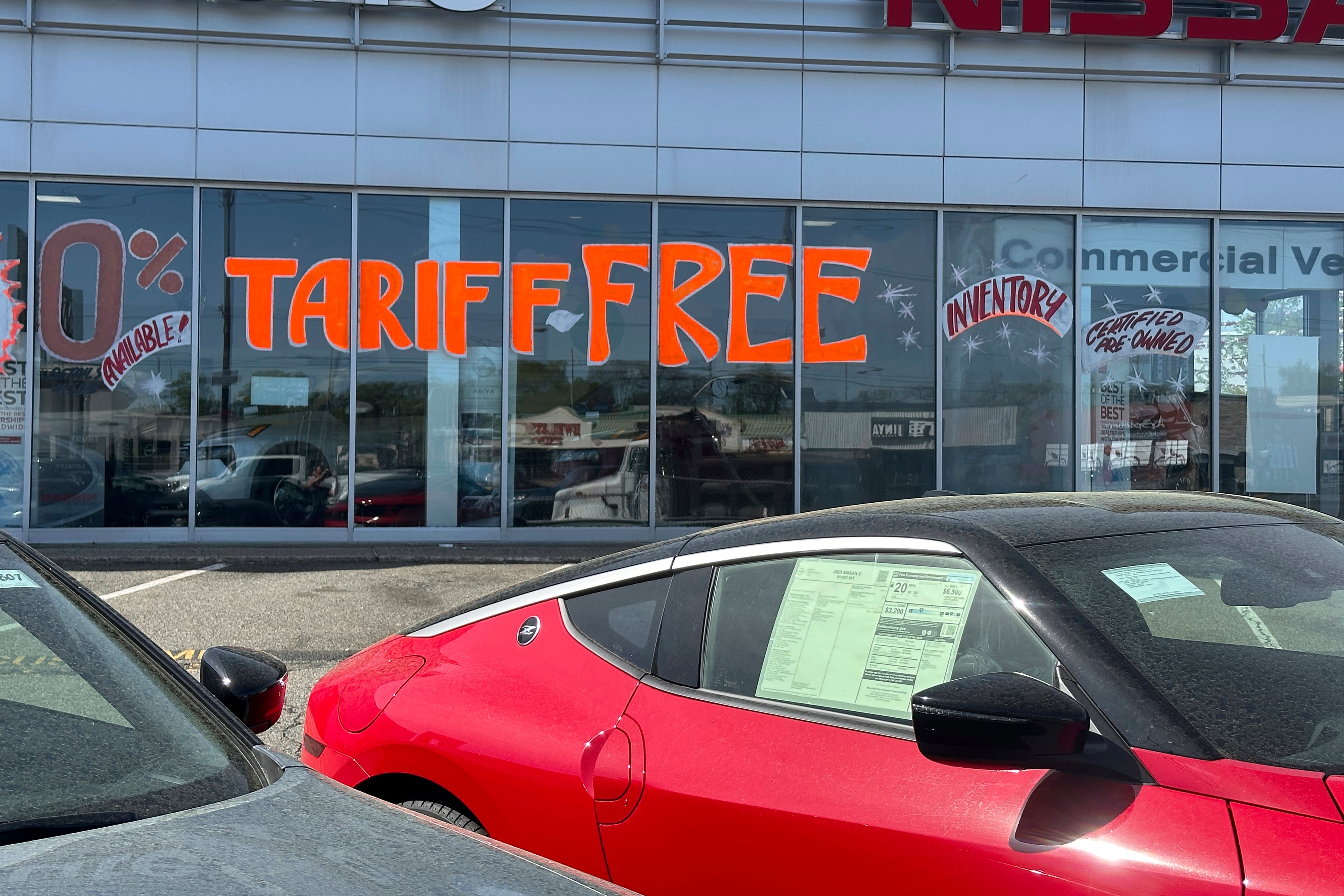NEW YORK (AP) — President Donald Trump’s doubling of tariffs on foreign steel and aluminum could hit Americans in an unexpected place: grocery aisles.
The announcement Friday of a staggering 50% levy on those imports stoked fear that big-ticket purchases from cars to washing machines to houses could see major price increases. But those metals are so ubiquitous in packaging, they’re likely to pack a punch across consumer products from soup to nuts.
“Rising grocery prices would be part of the ripple effects,” says Usha Haley, an expert on trade and professor at Wichita State University, who added that the tariffs could raise costs across industries and further strain ties with allies “without aiding a long-term U.S. manufacturing revival.”
Trump’s return to the White House has come with an unrivaled barrage of tariffs, with levies threatened, added and, often, taken away, in such a whiplash-inducing frenzy it’s hard to keep up. He insisted the latest tariff hike was necessary to “even further secure the steel industry in the U.S.”
That promise, though, could be at odds with his pledge to reduce food costs.
Rising grocery prices, Trump has said, were among the biggest reasons voters swung his way. A look around a supermarket makes clear how many products could be impacted by new taxes on steel and aluminum, from beer and soda to dog food to can after can of beans, fruit, tomato paste and more.
“It plays into the hands of China and other foreign canned food producers, which are more than happy to undercut American farmers and food producers,” insists Can Manufacturers Institute president Robert Budway. “Doubling the steel tariff will further increase the cost of canned goods at the grocery store.”
Budway says production by domestic tin mill steel producers, whose products are used in cans, have dramatically decreased in recent years, making manufacturers reliant on imported materials. When those prices go up, he says, “the cost is levied upon millions of American families.”
Food companies were already warily assessing the administration’s tariffs before the latest hike, which Trump said would go into effect on Wednesday. The Campbell Co., whose soup cans are a staple for millions of Americans, has said it was working to mitigate the impact of tariffs but may be forced to raise prices. ConAgra Brands, which puts everything from cans of Reddi-Whip to cooking sprays like Pam on supermarket shelves, likewise has pointed to the impact steel and aluminum tariffs have.
“We can’t get all of our materials from the US because there’s no supply,” ConAgra CFO David Marberger said at a recent Goldman Sachs conference on global staples.
Beyond the obvious products — canned foods like tuna, chicken broth and cranberry sauce — economists warn of a spillover effect that tariffs can have on a gamut of items. If the cost to build a store or buy a truck to haul food rise, the prices of products may follow.
Most Americans will never buy a tractor, but Babak Hafezi, who runs a global consulting firm and teaches international business at American University, says a price spike in such a big-ticket item vital to food production will spill down to all sorts of other items.
“If a John Deere tractor costs 25% more, consumers pay the price for that,” Hafezi says. “This trickles down the economy and impacts every aspect of the economy. Some of the trickling is immediate and others are slower to manifest themselves. But yes, prices will increase and choices will decrease.”
Trump appeared before a crowd of cheering steelworkers to unveil the new tariffs at a rally outside Pittsburgh. In a statement, David McCall, president of the United Steelworkers International union, called tariffs “a valuable tool in balancing the scales” but “wider reforms of our global trading system” are needed.
It may be harder to gauge the weight of tariffs on, say, a can of chickpeas versus that of a new car, but consumers are likely to see myriad indirect costs from the levies, says Andreas Waldkirch, an economics professor at Colby College who teaches a class on international trade.
“Anybody who’s directly connected to the steel industry, they’re going to benefit. It’s just coming at a very high cost,” Waldkirch says. “You may get a few more steel jobs. But all these indirect costs mean you then destroy jobs elsewhere. If you were to add that all in, you come up with a pretty large negative loss.”
___
Matt Sedensky can be reached at msedensky@ap.org and https://x.com/sedensky









